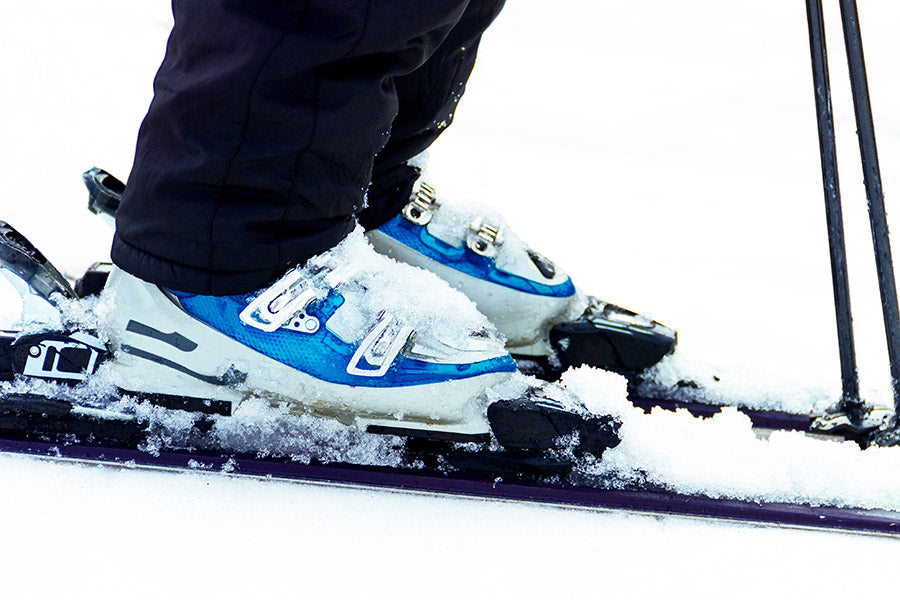All
How to Choose the Right Cross-Country Skis
Guillaume Dls

Want to get the whole family into cross-country skiing (again)? Whether you are a beginner on groomed trails or an expert off-piste skier, making the right choice of skis is crucial to an optimal experience.
With a wide range of skis on the market with slight differences in size, retention system, bindings, etc., it can be hard to know what the best choice is.
Here are five essential elements to consider when choosing your cross-country skis. You’ll also find some bonus of tips for the little skiers in the family!
Type of Ski
The first question to ask yourself when choosing your cross-country skis is how you will use them. Are you going to go for planning a leisurely stroll along the trails, or are you going to hit the slopes at full speed?
To suit everyone’s tastes and abilities, there are three types of cross-country skis:
-
Classic cross-country skiing, which essentially consists of advancing one ski after the other on relatively undulating trails;
-
Skate skiing, which is more dynamic and requires more strength when planting the pole;
-
Off-piste skiing, also very dynamic, which is practiced off the marked and groomed trails.
For classic cross-country skiing, the skis are relatively long, and equipped with a grip zone to avoid backward movement on the slopes. Skate skiing (or skating) and off-piste skiing requires shorter skis that are stiffer and do not feature a grip zone.
Once you’ve decided what kind of skiing you’re going to do, we can focus on the more technical parameters of the equipment.
What Length of Cross-Country Skis Do I Need?

Adults
The size of your skis is the first technical criterion to consider, as it will greatly determine your experience of this winter sport. Ski size influences handling and speed and should be determined by considering your unique profile, experience, and abilities.
More specifically, to select the right size of cross-country skis, you will have to consider:
-
Your weight and height;
-
Your level of practice;
-
Your fitness and energy level.
In general, cross-country skis are 15 to 20 cm longer than the skier's height. The length also increases in proportion to the weight. Don't hesitate to ask for advice in the store to find the right size for your body type.
The experience level of the skier is also an important factor. For example, a beginner will be more comfortable on shorter and wider skis. Experienced skiers, on the other hand, opt for longer skis, which make it easier to glide.
You should also know that the longer and thinner the skis, the less maneuverable they are. Therefore, you’ll have to choose the size of your skis according to your physical abilities and your energy level at the time.
Children
For your little ones, opt for short and wide skis, especially if they are beginners. While you’re at it, don't forget to cover them up with an appropriate ski suit! The TEKNIK line from Deux par Deux features warm, waterproof, and comfortable outfits for long strolls along snowy trails.
The TEFLON EcoEliteTM treated outer fabric and fleece lining will keep your child warm on all their adventures.
Each TEKNIK suit has a removable hood, sleeves, wristbands, and pants. This unique ski suit also adapts to your child’s growth, perfect for long-term use!
As a bonus, TEKNIK snowsuits are eco-friendly. Made of fabric made from recycled bottles, they take care of your child and the planet!
Ski Camber

Adults
Camber, which is the height between the ski and the snow, is the second criterion to explore when choosing your cross-country skis. It is as important as the length of the skis and will also vary according to your abilities and level of experience.
The camber determines the grip/glide ratio, as well as the maneuverability. The lower the camber, the stiffer the ski and the more it sticks to the snow. The higher the camber, the easier it is to glide, but maneuverability is compromised.
Choose a low camber if you are a beginner, a medium camber if intermediate, and a high camber for intensive sessions and speed records!
Children
For young skiers, select a low camber for better grip and maneuverability. This will make their first experience of cross-country skiing more enjoyable.
Anti-reverse System
Adults
In general, skis designed for classic cross-country skiing have a rough part that facilitates adhesion to the snow and propulsion.
There are three types of grips that are used for different types of skiing.
For recreational cross-country skiing and for beginners, opt for cross-country skis with scales. These skis allow for excellent retention, making it easier to glide alone on groomed and marked trails. They also ensure that you don't fall backwards when climbing. However, with this type of grip, the possibilities of sliding on the snow are reduced.
If you are a more dynamic cross-country skier or an intermediate skier, you can opt for synthetic skins. This model offers a compromise between good grip and glide.
Finally, experienced skiers will prefer waxed skis. These skis, coated with a liquid or solid wax, ensure optimal gliding and facilitate more intense cross-country skiing. The choice of wax will depend on the weather conditions and the quality of the snow.
Children
Choose skis with scales. These are perfect for the first sessions because they are safer and prevent backward falls. They will also make progress in the snow less difficult by improving the grip.
Binders

Adults
The last thing to look into when buying or renting your cross-country skis is the bindings. There are currently four types of bindings:
-
SNS
-
Prolink
-
Turnamic®
-
NNN®
Please note that Turnamic®, NNN®, and Prolink shoes and bindings are compatible with each other. SNS shoes and bindings, on the other hand, have their own standards and are not compatible with other brands.
For first timers, the most interesting option is certainly Prolink. This brand offers a wide range of equipment and the latest innovations in bindings. For example, they offer light materials or even the ability to adjust the position of the binding on the ski.
Children
Lightweight bindings are preferable, allowing for greater maneuverability and making the skis easier to carry. Also, choose bindings that are easy to engage.
Do you feel ready now to embark on an adventure with your family? If your kids are missing any winter accessories, don't hesitate to take a look at our snow shop!
Happy skiing!


